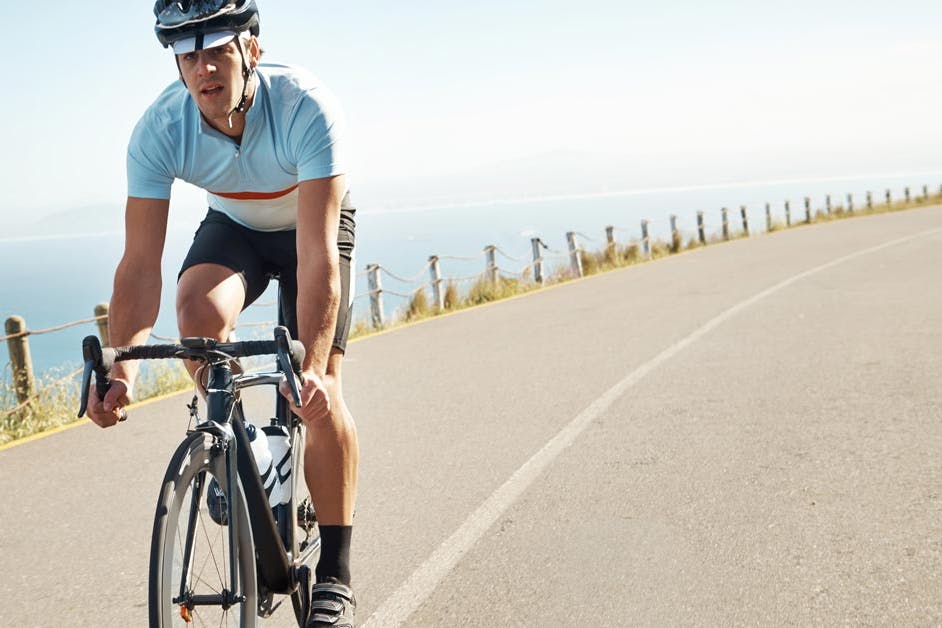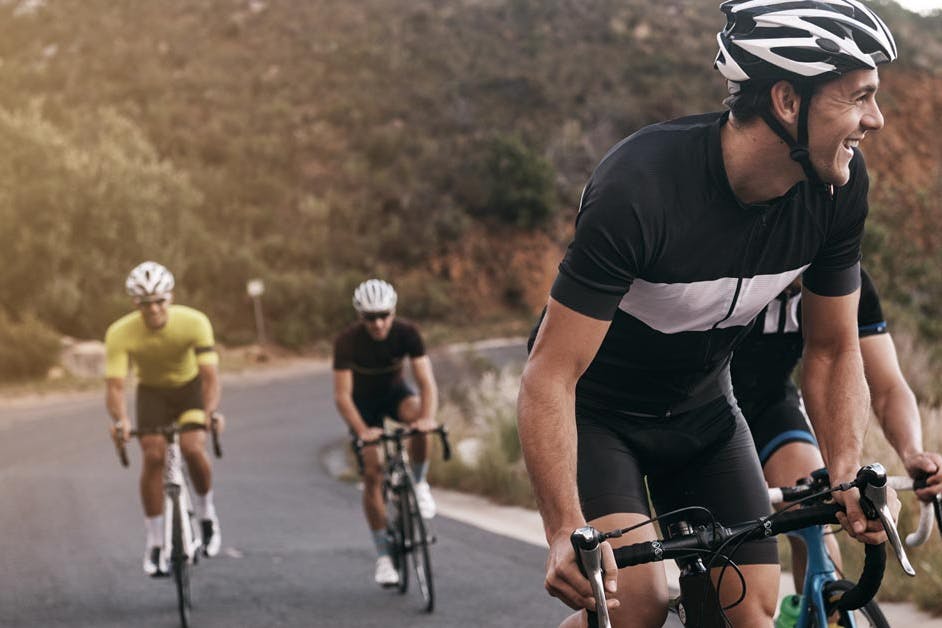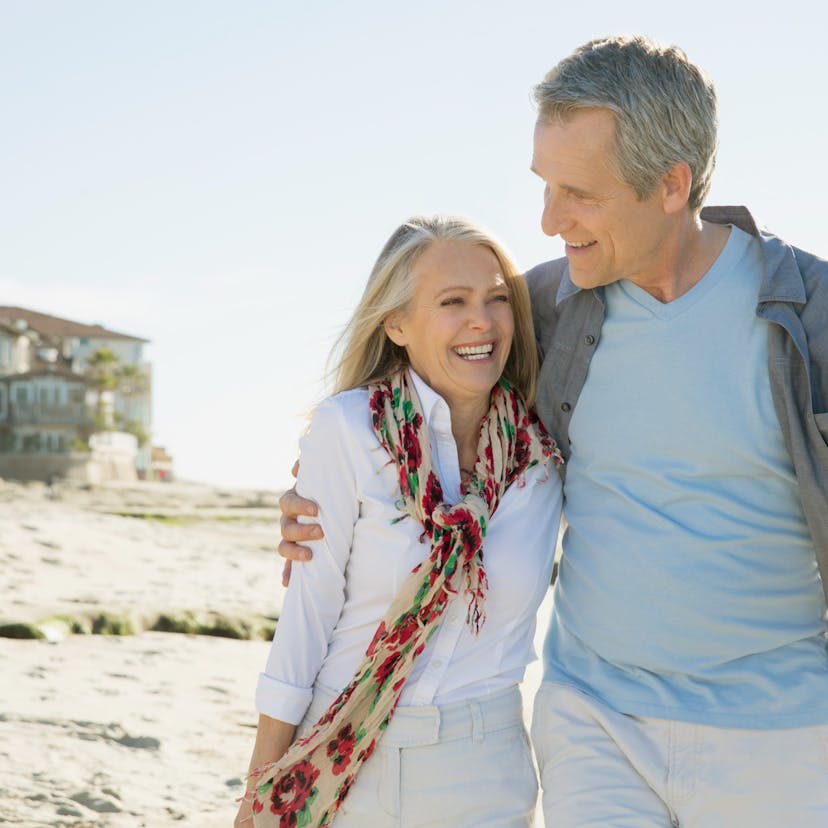Knee Pain While Cycling? Discover a Natural Remedy
Cycling’s repetitive motion can cause severe knee pain. Prolotherapy offers a non-invasive, natural way to stimulate the body’s healing process.

Cycling is praised for how gentle it is on your joints. In comparison to football, running, and long jump, cycling is indeed a gentle workout. However, it’s not the golden ticket for which you might be hoping. As a physical activity that requires a repetitive motion, cycling can lead to severe pain – especially knee pain.
A 2014 study found more than 40% of cyclists suffer from knee pain. With 66.5 million cyclists in the U.S., that’s a large percentage of individuals who endure mild to severe knee pain on a regular basis.
Typically, the culprit of knee pain while cycling is improper equipment and/or poor bike position, reported bike-fit specialist Michael Veal of BikeDynamics in Warwickshire, England.
The following outlines the four most common types of knee pain you’ll experience while cycling and what to consider for when adjusting your bike.

Riding when your bike isn't fit to your body, especially over long distances, can place undue stress on your joints and cause severe pain.
4 Common Types of Knee Pain Caused by Cycling
1. Pain in the Front of Your Knee (Anterior Knee Pain)
The Cause: Generally, pain in the front of your knee (aka kneecap or patella) is attributed to powerful quad muscles that deliver an excess amount of force across your joint.
Your quads are some of the strongest muscles in your body. You use them a lot while you’re cycling. That’s why so many cyclists have such large quads. The stronger the muscle, the more force it can create, and the faster you can ride. Unfortunately, your joints are only designed to take so much.
How to Adjust Your Bike: One of the first items to check is your saddle height. The lower your saddle, the sharper the angle is at the top of your stroke. This increases the force each stroke places on your kneecap.
Cycling Weekly shared a helpful how-to for checking your saddle height. This in-depth guide requires a good deal of measuring, which you might not be able to do while you’re out and about. For a quick solution, take a seat on your bike. Place your right foot on the pedal at the 6 o’clock position. Your leg should be fully extended. In most cases, this will result in your knee having roughly a 20% bend at the peak of your stroke.
2. Pain in the Back of Your Knee (Posterior Knee Pain)
The Cause: Typically, pain in the back of your knee can be directly linked to over-extending during your stroke.
How to Adjust Your Bike: Again, you’ll want to look at your saddle. Saddles that are too high or too far back can force you to extend your leg unnaturally while riding. Ultimately, this can cause the pain to spread from the back of the knee to your hamstrings and beyond.
Popular Health Tips
2. Pain on the Inside of Your Knee (Medial & Lateral Knee Pain)
The Cause: In most cases, this pain is a direct result of poorly placed cleats (clip-in bike shoes) or pedals. As the name would suggest, clip-in cleats keep your foot attached to the pedal. Ideally, the force from your legs will travel in an uninterrupted vertical line from your hips all the way to your toes.
How to Adjust Your Bike: Start by looking at your cleat placement. If your cleats are placed too close to the inside of your shoes can increase the distance between your feet and therefore your knees. You’ll also want to look at where your pedals are placed. Pedals that ride wide, can also cause this distance to be too great, creating an unnatural stroke.
3. Pain on the Outside of Your Knee (Iliotibial Band Syndrome)
The Cause: Pain on the outside of your knee is often due to an inflamed iliotibial (IT) band. Your IT band connects your hipbone, gluteal muscles (butt), and tibial plateau (top of your lower leg bone). Through overuse and improper technique, IT bands can become stressed and tight.
How to Adjust Your Bike: Like pain on the inside of your knee, pain on the outside of your knee is often caused by improperly placed cleats. If your cleats are placed too far on the outside of your shoes, it can narrow your stance, resulting in pain.

Just trying to 'live with' pain can ultimately do more harm than good. Don't let knee pain keep you from the rides you love. Prolotherapy can help your body naturally heal so you can get back to living life how you want it.
Prolotherapy Helps Heal Stressed, Strained and Torn Ligaments and Tissue
Making sure your bike fits your body is key to eliminating any further damage to your knees. Unfortunately, if you have knee pain, the damage has been done.
Sometimes rest can allow stressed and strained ligaments to heal. However, for many individuals suffering from knee pain rest is not enough. Prolotherapy helps stimulate your body’s natural ability to heal.
In 2000, the Bethany Medical Center in Kansas City, Kansas, found that in just 12 months patients who received prolotherapy injections had a 44% decrease in knee pain, 63% decrease in swelling, and a 14-degree increase in flexion.
Prolotherapy Naturally Stimulates Healing
With traditional medicine, treatments for chronic knee pain often include one or all of the following options: painkillers, corticosteroid shots, and surgery. The problem is, each of these options put you at risk of doing further harm.
Painkillers introduce foreign chemicals into your body, which can cause severe side effects.
Both painkillers and corticosteroid shots work to mask your pain. While this does provide temporary relief, your body experiences pain for a reason. Pain helps you regulate your activity, by alerting you to stop. Take away that pain and you can push your body further than it should go, often causing more damage to the affected tissue.
Surgery always presents risks. No matter how small the procedure these risks can include complications with anesthesia and infection at the incision site. Additionally, there’s no guarantee that surgery will be successful.
Unlike the external masking agents and invasive surgery recommended by traditional doctors, prolotherapy stimulates your body’s innate ability to heal.
The ligaments, organs, and tendons throughout your body are always communicating with one another. They do so by releasing chemical messengers which are delivered to your brain.
Prolotherapy utilizes the power of these messengers. By injecting a small irritant solution at the affected area, we can help trigger an internal response to heal that specific area.
Tired of Living with Knee Pain?
At Premier Integrative, we don’t believe pain should keep you from living the life you want. By combining natural treatment solutions, like prolotherapy, with an investigative approach at identifying the key cause of our symptoms, allows us to help you heal and prevent recurring damage.






